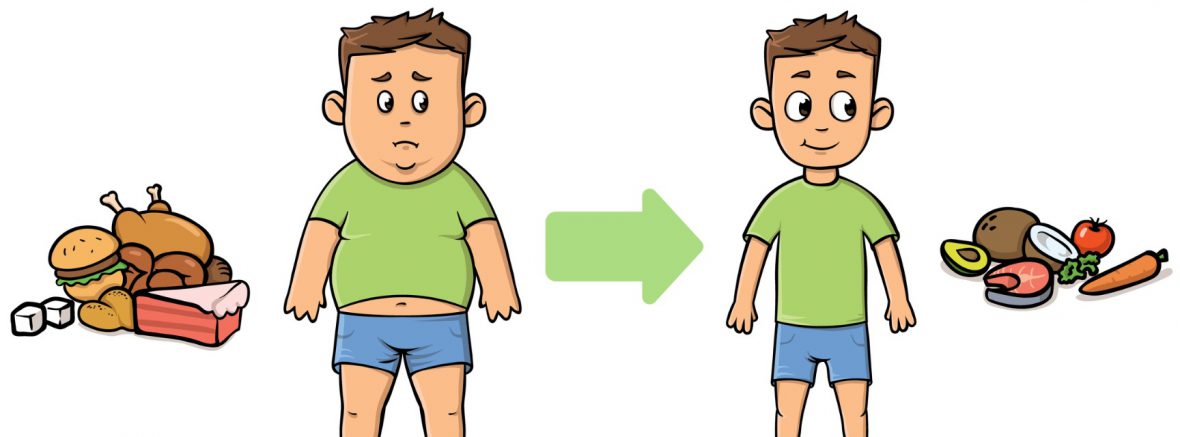Obese. It’s a word we hear more and more often these days. When I was growing up, only one of my classmates would have qualified as overweight. Today, nearly a third of US children between the ages of 2 and 19 are overweight or obese. https://journals.lww.com/jpgn/fulltext/2010/12003/obesity_and_insulin_resistance_in_children.17.aspx
The term “childhood obesity” can sound unsettling, and no one likes to think their child fits that label. However, realizing that your child is overweight can be a starting point for a better and healthier life.
Let’s look at what the term “childhood obesity” means. Then, let’s look at what you can do for your child and for your entire family.
What is childhood obesity, and what can we do about it?
Obesity is defined as a high body mass index (BMI). BMI is a measurement that is calculated based on height and weight. While not perfect, BMI does give a rough indication of whether a person is in a healthy weight range. When the body mass index is over 30, a person is considered obese. Click on this link (https://nhlbi.nih.gove/health/educational/lose_wt/BMI/bmicalc.htm) for the official BMI calculator.
There are a few issues with the BMI calculator: the biggest one is that there is no consideration of one’s level of physical fitness. Since muscle weighs more than the same mass of fat, a sturdily built, muscular person can have a higher BMI than a person of the same size who has little muscle. However, these issues with the BMI calculator apply largely for adults because few children are lifting weights or seriously working out. If a child’s weight and body composition is such that their BMI is over 30, that means they are carrying more fatty tissue than they need.
Why does being overweight matter?
Obesity can have a serious impact on one’s social life, especially for children. Obese children may become insecure about what they look like, be bullied by their peers, have difficulty in gym class, or become anxious and depressed.
Being overweight also carries serious health risks. Children with BMIs over 30 are more likely to develop insulin resistance, type 2 diabetes, heart disease, high blood pressure, joint pain, and arthritis. These health issues traditionally afflict adults and elders. Type 2 diabetes, for example, used to be called “adult onset diabetes.”
What changed? Why are children today getting diseases that they shouldn’t have to face until old age?
Why is this happening?
The single biggest cause of obesity in children is the standard american diet (SAD, also known as the Western pattern diet or WPD), which is low in fiber and high in saturated fat, trans fat, and carbohydrates. Social, genetic, and environmental factors also play a role. As an example of a social factor, the prevalence of electronic devices had made it less common today for children to play outside.
What can we do?
Overweight and unhealthy children are a problem—not the children, but the overweight and unhealthy part.
The good news is that you can make a difference. Obesity is considered a lifestyle disease, meaning that it is caused by the way we live. In other words, you don’t need a doctor’s prescription, a fancy program, or some expensive equipment to make positive changes for your child and their future.
There are three components to losing weight, reversing insulin resistance, avoiding heart disease, and living well. These three components are nutrition, activity, and sleep.
Nutrition
If the Standard American Diet is the single biggest contributor to the obesity epidemic, then good nutrition is your best tactic to fight against obesity.
You will find an overwhelming variety of diet plans online, in the bookstore, and in the advice your friends dish out. Some of these plans are good, some are okay, and some are the opposite of healthy. But even the healthy ones can be hard to do and harder to stick to. You don’t need a diet plan; you need a sustainable lifestyle.
Instead of focusing on what foods to eat or not eat, focus on eating real food. That means single-ingredient foods whenever possible, lots of fresh fruits and vegetables, and foods with five or fewer ingredients on the label. For example, a baked potato with a small amount of real butter and sea salt, steamed green beans, and baked fish.
Make simple changes. You are not aiming for perfect—just for better. Swap in yogurt with fresh fruit, and swap out the toaster pastries. Pack a lunch. Grab an apple. Find fun ways to eat veggies. Say no to anything that has sugar or high-fructose corn syrup among the first four ingredients. Drink fruit-infused water instead of coke. Serve watermelon instead of cake. Practice drinking plenty of water. Have a salad with dinner every night. Don’t feel guilty about fun foods—have fewer and then enjoy them! Pay attention to what makes you feel best and most alert and have more of that.
Activity
If nutrition is the best defense against obesity, vigorous activity is your best offense. Exercise builds muscle mass. In turn, muscle mass increases metabolic rate, lowers insulin resistance, decreases blood pressure, and improves weight loss. That’s a win-win, but it doesn’t stop there. Exercise also improves one’s mood and quality of sleep. Better sleep and a better mood are both important for weight loss and for a better quality of life.
Adults should try to go to a gym that is also a good gym for kids. Playtime is the best form of exercise for children and for adults too.
Here are some fun ways to make physical activity part of your everyday life.
- Wash the windows together. Even if you live in a small apartment, this can be a fun family activity.
- Encourage splashing in the tub.
- Dance in the living room.
- Explore worship dance, Praise Moves™, or martial arts.
- Go for a walk in the park. Don’t forget to spend some time on the swings while you’re there!
- Create a treasure hunt that includes lots of walking and climbing.
- Have stair races, seeing who can get to the top first. This works best in a wider stairwell and can be especially fun in a multi-story building.
- Go for a nature walk. Take a camera and document the small wonders of nature.
- Find a swimming pool!
- Join a dance class.
- Play softball with a local league.
- Volunteer at Vacation Bible School or a summer camp.
- Bust out the hula hoops.
- Choose video games that make you move your entire body.
- Climb trees.
- Skip rocks at a nearby pond, lake, or creek.
- Go horseback riding.
- Walk the dog.
- Practice walking on your hands (but don’t do this while walking the dog!).
- Play soccer.
- Do geocaching.
Most of all, have fun and be creative. For children, physical activity should not be a chore—it should be normal and it should be fun.
Sleep
Not getting enough sleep can contribute to obesity. We often overlook or neglect sleep when thinking about ways to lose weight, but sleep is key. Because sleepiness can be mistaken for hunger, we sometimes eat when we aren’t hungry. We know that something is wrong, so we try eating.
Lack of sleep also causes stress hormones like cortisol to increase. High levels of stress hormones trigger your body to hang onto energy, including energy stored as fat. Hence, a lack of sleep makes it more likely that you will gain weight and that the weight will be harder to lose, even if you are eating well and getting plenty of exercise. There is some evidence that this negative effect of sleep deficiency is even more pronounced for teens because their hormones (including stress hormones) are already surging.
Since sleep is so important, how can we get more of it?
Practice good sleep hygiene. This means going to bed and waking up at pretty much the same time every day.
Practice putting screens away at least an hour before going to bed. Don’t sleep with your phone. The EMF (electromagnetic frequency) emissions and the blue light generated by electronic screens disrupts the complex inner brain system that regulates sleep. So, it is important to give your brain time to reset before going to bed. In fact, having phones charge overnight in a room other than the bedroom is a great idea, since this also cuts down on late-night phone or text conversations. If you need music or white noise to sleep, use a radio or a CD player instead of the television.
Develop a bedtime routine. This can include brushing teeth and changing into nightwear, but it should also include a relationship activity, like reading a bedtime story, praying, snuggle time on the sofa, or listening to music together.
Some kids may need supplements like melatonin to help them sleep but try the non-medication options first.
Live life joyfully and laugh more
As you lean into good nutrition, vigorous activity, and plenty of sleep, remember to have fun and live life joyfully! Laughter resets your brain, boosts your mood, releases hormones that make you feel good, and improves your immune function. https://www.thebestbrainpossible.com/why-your-brain-loves-to-laugh/
Have fun. Live well.



